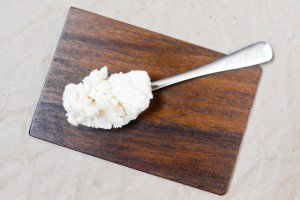I’ve recently read a collection of stories by Lara Vapnyar called Broccoli and Other Tales of Food and Love. The six stories in this pretty volume talk about Russian immigrants to the United States, and use the revealing lens of food to show how they adapt to their new lives. Stories about migrants never fail to move me, and perhaps also because I was very fond of my Russian coworkers when I lived in California, I thought these particularly poignant.
The opening story is called A Bunch of Broccoli on the Third Shelf, and without disclosing too much about the plot — I detest spoilers and those who perpetrate them — it is about Nina, who buys vegetables every Saturday morning from the Korean and Russian stores in Brooklyn but, for a number of reasons, never gets around to cooking them.
And it is of Nina that I thought when I realized that the head of cabbage I’d bought at the greenmarket some time before wasn’t going to cook itself. Buying it had sounded like a virtuous idea at the time — cruciferous vegetables are so good for you — but every time I pulled the vegetable drawer open, my hand always seemed to land on some other, more immediately appealing option.
I am lucky that this particular variety, called chou blanc in French, seems to have been designed to withstand the reluctance of the cook, and keeps very well: the outer leaves may lose some of their luster, but if you peel those off, the cabbage looks as good as new underneath.
Still, I was hoping to find a non-dull way to use it, and I remembered the recipe my friend Molly posted not long ago, in which shredded cabbage is seared in the wok and seasoned with a combination of chili sauce and soy sauce. I don’t have a wok nor the sambal ulek that she recommends, but I do have a skillet and some sriracha, and I thought they would do nicely.
Having roasted a chicken in my brand new oven the night before — to excellent but messy results — I also had scraps of meat left over. These joined the cabbage in the skillet for a most satisfying lunch, with a sprinkle of toasted sesame because it seemed a natural fit and I find it hard to resist such a cute little sesame mill.
As I mentioned above, my cabbage was a chou blanc, i.e. a smooth and tight head of cabbage that’s light green on the outside and off-white on the inside. You could, however, use the cabbage of your choice in this recipe, so long as it’s the crisp kind that would work in coleslaw. Molly also suggests adding a bit of sliced fennel, but it’s a little early for that around here.
Speaking of Molly, surely you know that her first book is released today in the US? A Homemade Life is a memoir with recipes that I had the chance to preview a few months ago, and I am confident you will enjoy it as much as I did.

Have you tried this? Share your pics on Instagram!
Please tag your pictures with #cnzrecipes. I'll share my favorites!
Ingredients
- One small head of cabbage, about 500 grams or 18 ounces, with smooth, crisp and tightly wrapped leaves
- 2 teaspoons grapeseed oil, or other oil with a relatively high smoking point (olive oil won't do)
- Sriracha, or other chili sauce, to taste
- Soy sauce, to taste
- Leftover meat from a roast chicken (if you don't have that on hand, get a raw chicken breast and grill or sear it separately, or substitute diced firm tofu, or top each bowl with a poached or fried egg)
- Sesame seeds, toasted
Instructions
- Cut the cabbage in quarters, carve out and discard the stem part, and slice finely. (I just use the slicer blade in my ancient food processor.) Pull the chicken meat apart into bite-size pieces.
- Heat a large skillet over high heat.
- When the skillet is very hot, add the oil, and let it heat up for a few seconds. Add the cabbage and stir to coat. Cook for a couple of minutes, stirring regularly, until softened and slightly colored.
- Add a few squirts of chili sauce, stir, and cook for a few more minutes, until the cabbage is golden-brown in places.
- Add a few dashes of soy sauce and the chicken, and stir well.
- Cook a minute more, stirring regularly, until the chicken is warm and the soy sauce starts to caramelize at the bottom of the skillet. Add a drop of water to deglaze and remove from the heat.
- Taste, add a little more hot sauce and/or soy sauce as needed, and serve hot, with a sprinkle of sesame seeds from the sesame mill.
Notes
Adapted from Molly's recipe.
This post was first published in March 2009 and updated in July 2016.














